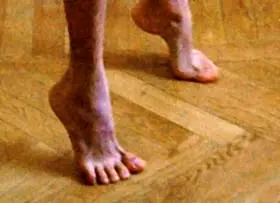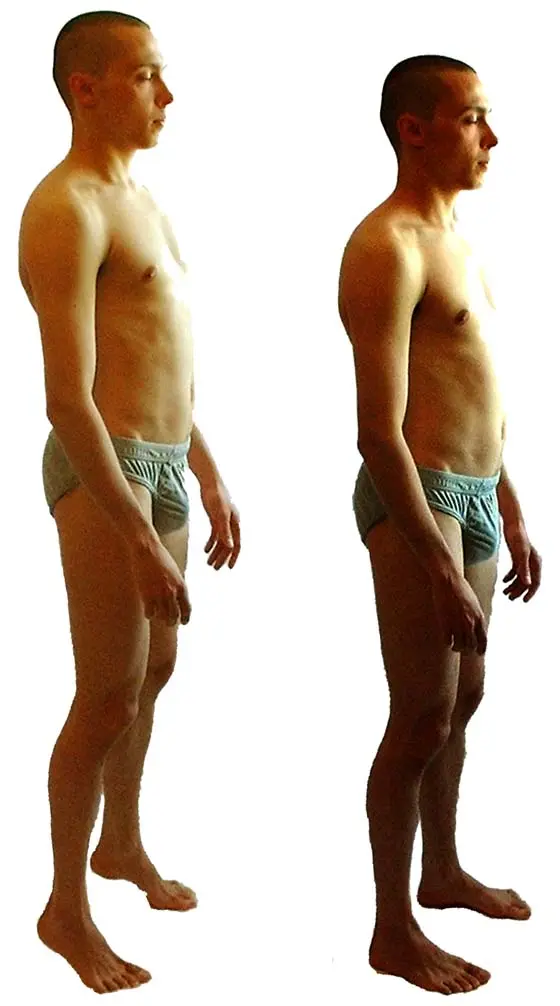|
Qi Energy Exercises
|
Qi Posture Exercise 3 Adjust your balanceWith a good posture you are always in good balance, too, without having to work on it. You are centered — but more about that later. So, by testing your balance you get a method to perfect your posture, which is what the following exercise is about.
It should be done with a light mood, almost indifference, so that you avoid getting tense by thinking too much about details in your posture. Do not try to adjust your body in order to find a perfect equilibrium. Just play with the movements of the exercise, so that the body by itself makes the necessary adjustments. Your conscious mind should not be involved in it. The best is if you are not even aware of the process. So, don't give it much thought. It is suitable to do this exercise in connection to the first posture exercise, especially as long as you feel that it improves your sense of standing steady. Balance is primarily being able to rest in your posture. When your posture is good, you can feel that all parts of your body have fallen into place, so that you do not need an intricate system of tense muscles to keep them there. It is a natural equilibrium, where the whole body is in balance. It is not stiff at all, but has a soft flexibility that keeps your sense of balance even when you move.
How to do it
You can also test your balance by doing this exercise once, then take a few regular steps forward, stop, and do the exercise again. When you walk, the body posture tends to fall back to old habits, so you might discover that it is like starting over. A balanced posture leads to a better way of walking. This you learn and establish by mixing walking with this exercise of balance. So, do not hesitate to try it as much as you like. When you find no difference in your posture, whether you are on your toes or not — then this exercise is no longer necessary for you. But until then you do well to repeat the exercise as much as you do the first one, or maybe even more frequently, since it is so easy to do wherever you are. You can even do it a little at the same time as you stand and converse with other people, and they will not find your behavior that very peculiar.
Qi Posture ExercisesHere is a set of simple exercises by which to improve your posture. That's essential in order to increase your qi energy flow. I recommend that you do them in the given order, when you try them out. Once you've become familiar with them, you can do them in any order you please. Trust your instincts.
Qi Energy Exercises
Qi Exercise Settings
Qi Energy Breathing
Qi Posture
Qi Relaxation
Qi Extension
Qi Centering
The Book
My Books About Life EnergyHere are the two books I have written on the subject of life energy. This website contains some of the material from the first one. Click the image to see the book at Amazon (paid link).
About CookiesMy Other WebsitesLife EnergyThe many life force beliefs all over the world, ancient and modern, explained.
TaoisticTaoism, the old Chinese philosophy of life, based on Tao, the Way. Also, the complete Tao Te Ching translated and explained.
AikidoAikido, the peaceful martial art. Its basics, principles, techniques, and more — in texts, images and videos.
I Ching OnlineThe 64 hexagrams of the Chinese classic I Ching and what they mean in divination. Free online reading.
Other Books by MeClick the image to see the book at Amazon (paid link).

Stefan StenuddAbout Me I'm a Swedish author and aikido instructor. I've written several books about aikido, qi energy and other life force concepts. I'm also an historian of ideas, researching the thought patterns in creation myths. Click the image to get to my personal website. Contact
|
 Qi — Increase Your Life Energy
Qi — Increase Your Life Energy



